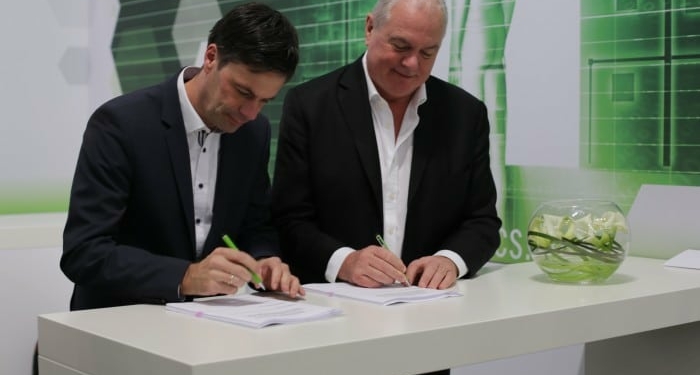source: Heraeus news
Heraeus Electronics, a leading provider of materials solutions for the semiconductor and electronic packaging industries, today announced a global licensing agreement with Mozaik Technology Ventures Limited, an industry leader in super fine thick film technology. Under the terms of the agreement, Heraeus Electronics will license a broad range of Mozaik’s photoimageable thick film paste technology.
The partnership with Mozaik will enable Heraeus to enhance its market-leading solution portfolio for customers who manufacture high-profile electronics, such as sensors, 5G high frequency communication circuits, smaller passive electronic components and touch panel displays. With the continued market trend toward smaller and finer electronics elements, advanced materials and the process technology to create them become increasingly critical requirements. The Mozaik photoimageable technology will be used to create a platform of thick film pastes such as silver, silver-platinum, silver-palladium, gold, platinum conductors and ceramic/glass insulators for these specific application areas.
According to Frank Stietz, President of Heraeus Electronics, “We have seen a market trend in thick film materials toward smaller features, such as conductors for finer lines and spaces. The industry will need to meet the demand and requirements for electronic component miniaturization and higher density microelectronic circuits. Mozaik’s product lines and technologies will enable us to set new standards in electronics capabilities and performance for our customers.”
Heraeus Electronics expects that by using photoimageable thick film pastes, its customers can build electronic components and circuits with lines and spaces (l/s) below 50 microns in size (demonstrated l/s already at 25 microns). The current state-of-the-art feature size with standard thick film inks is 75 microns under optimized and highly engineered conditions. In actual, practical manufacturing settings, most devices are built with 100 to 150 microns on an industrial scale.
Steve Muckett, the founder and Managing Director of Mozaik Technology Ventures, added, “We are pleased to partner with Heraeus Electronics because they are a strong and reliable supplier of electronic materials with a global reach. With Heraeus using our fine line capable pastes, it will drive benefits and innovation across our industry. We anticipate that many manufacturers of ceramic based circuits and components will be able to introduce low-cost and very fine resolution parts, which the market needs.”































